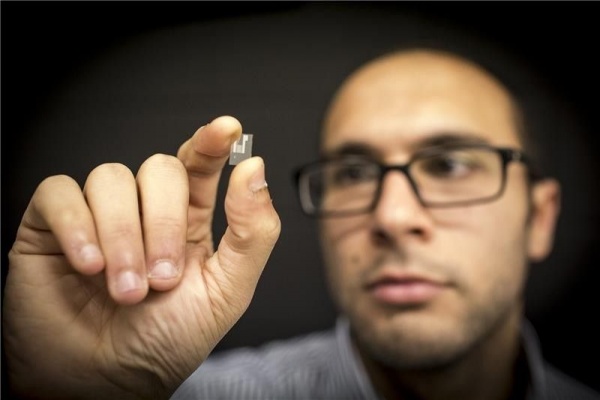According to the "Daily Science" website, researchers from RMIT University in Melbourne have achieved a significant breakthrough in utilizing sound waves for micro and nanoscale manufacturing. They’ve developed a technique that uses high-frequency sound waves to precisely control the flow and coverage of thin fluid films on specially designed chips. This innovative approach was recently published in the latest issue of *Proceedings of the Royal Society A*, marking an important step forward in the field of microfabrication.

Controlling the chip surface with sound waves
This new method leverages thin-film technology and advanced microstructure manufacturing techniques. The potential applications are vast, ranging from precision coating in industrial painting to medical wound healing, 3D printing, micro-casting, and even microfluidics. By enabling more accurate manipulation of fluids at the microscale, this research could revolutionize several industries.
Professor James Friend, head of the RMIT Micronano Research Centre, highlighted that the team has created a portable system capable of performing non-traditional micromanufacturing tasks. He explained that traditional methods often struggle with controlling fluid behavior due to structural limitations. However, by using sound waves, they can now direct fluid movement with remarkable accuracy.
"With sound waves, we can make the thin film either adhere to or move away from the surface depending on its thickness," Fland said. "This level of control wasn't possible before."
The technology is called "acoustowetting," and it relies on a special type of chip made from piezoelectric material. These materials convert electrical energy into mechanical vibrations. The chip’s surface is coated with microelectrodes connected to a power source, allowing electricity to be transformed into high-frequency sound waves. These sound waves then interact with the fluid film, enabling precise control over its distribution and behavior.
This development not only enhances our ability to manipulate materials at the smallest scales but also opens up exciting possibilities for future advancements in nanotechnology and biomedical engineering. As researchers continue to refine the process, we may soon see real-world applications that were once just theoretical dreams.
Silicon Carbide Grinding Wheels
Silicon carbide abrasive is harder than standard aluminium oxide with a very sharp abrasive grain. It is a versatile material, recommended for grinding relatively soft metals such as aluminium or cast iron but can also be used on extremely hard materials such as cemented carbide. Silicon carbide abrasive wheels are also widely used on non-metal workpieces, such as ceramics, stones.
Silicon Carbide Grinding Wheels are
ideal for small job shops and numerous general-purpose applications. Made of
premium green silicon carbide, these superb wheels get the job done -
effectively and efficiently! These super-hard, precision accessories minimize
material loss and maximize grinding-assembly performance, thus maintaining your
valuable tools in optimum condition. And they are conveniently designed to fit
most stationary bench grinders. Reduce effort and increase satisfaction with
these top-notch grinding wheels - perfect for tool and cutter grinding of
cemented carbide applications.
Kemei produce and aim on the following types grinding tools, such as aluminum oxide grinding wheel, silicon carbide grinding wheels, mounted points, Diamond Grinding Wheels, CBN Grinding Wheels and all types of saw blades and cut off wheels.
If you need any type of grinding tool or professional advice about grinding on your workpieces. Don`t hesitate to contact us!
Silicon Carbide Grinding Wheels,Grinding Points And Wheel,Brass Special Grinding Wheel,Rubber Special Grinding Wheel
Henan Jinlun Superhard Material Co., Ltd , https://www.jinlunsuperhard.com